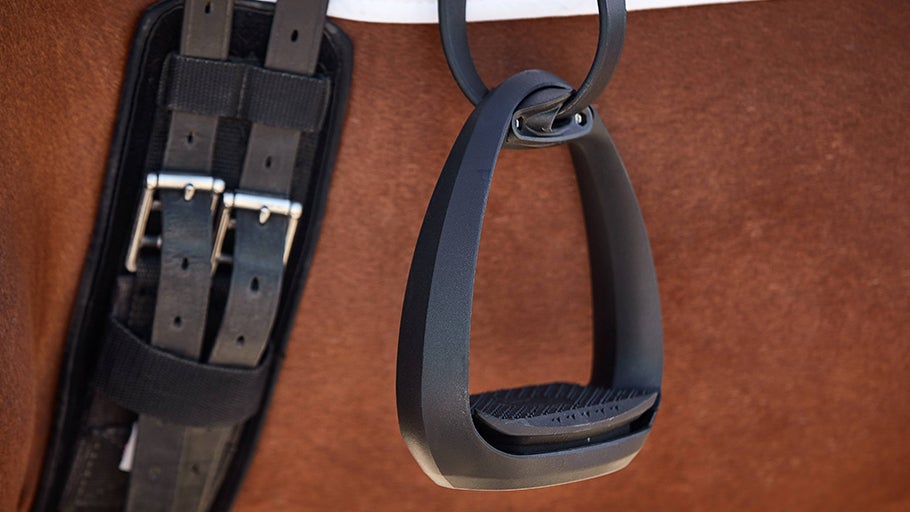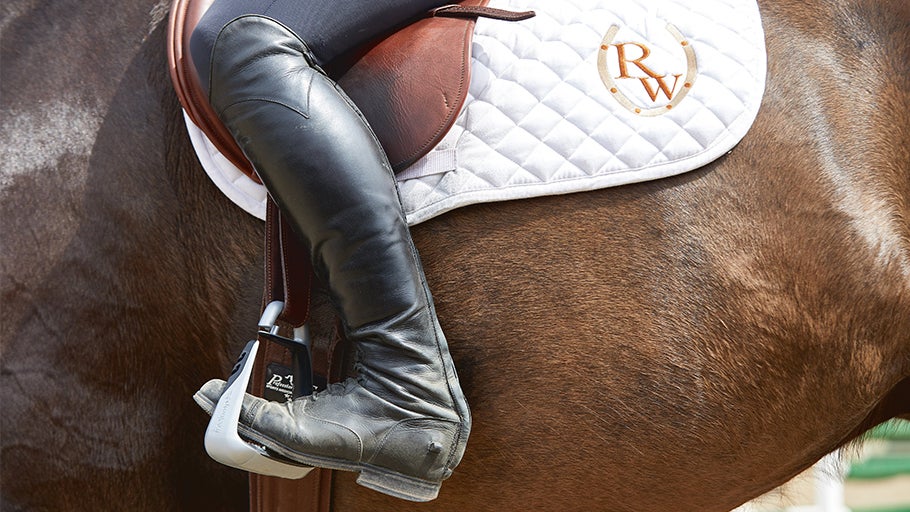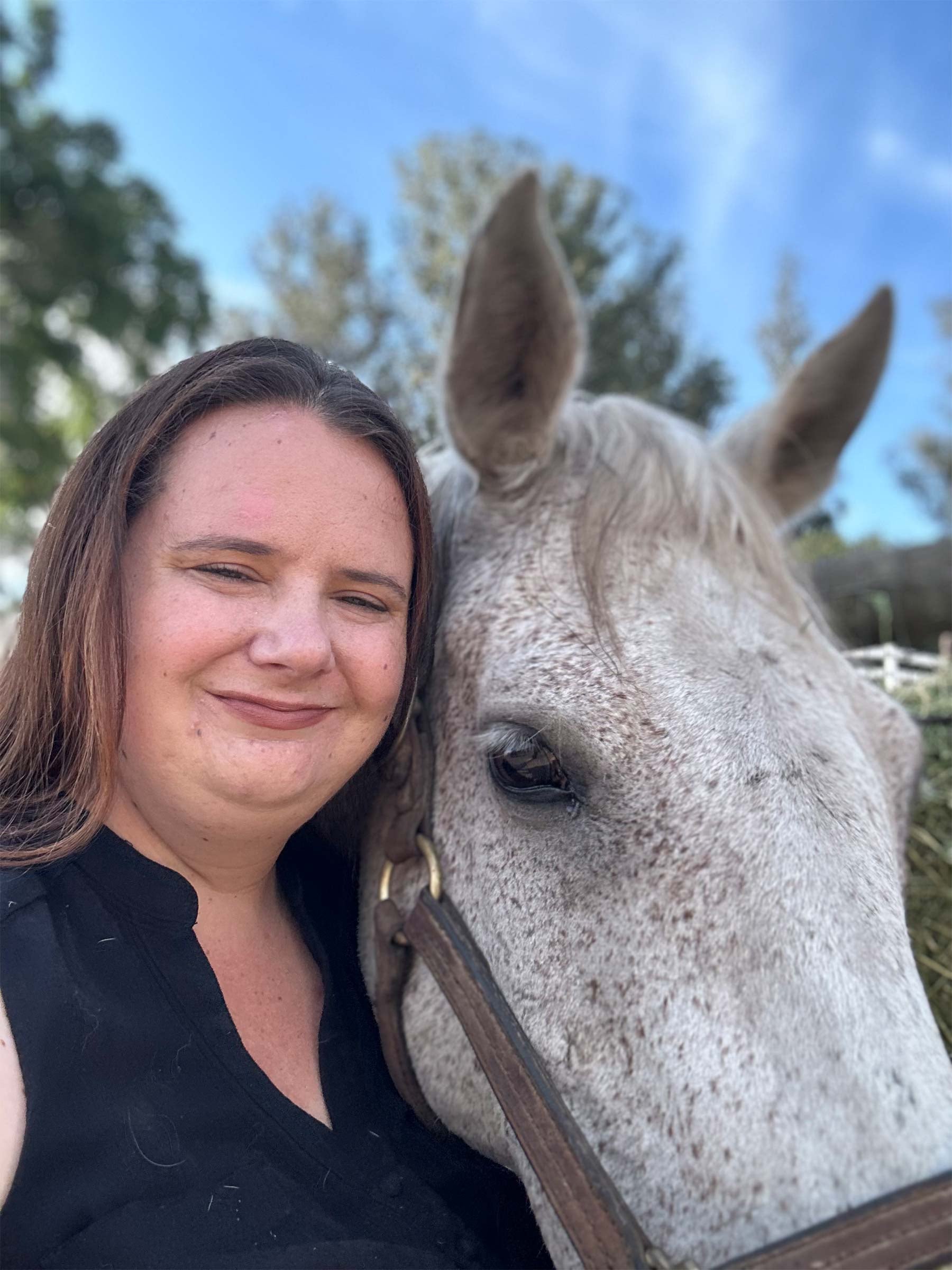
How to Choose Stirrup Leathers: Types, How to Measure, & More
The unsung heroes of the tack room, stirrup leathers play an important role during every ride (in which stirrups are used, of course)! They do a variety of jobs while we're horseback riding: from attaching our stirrups to the saddle to influencing our leg position, and beyond. Putting in the time and effort to select the right pair of stirrup leathers for you, your saddle, and riding discipline can make all the difference.
In an effort to help you determine which stirrup leathers are just right for your needs, we've compiled this complete guide detailing everything you need to know—from the different types of stirrup leathers to the right length for your discipline. Read on to discover all the ins and outs of selecting the best pair of stirrup leathers to elevate your riding!
Stirrup Leather Materials
Just like other pieces of horse tack, stirrup leathers are available in a variety of materials. With differences in durability to adjustability, a certain material may be the better choice for some riders than others. The most common material options you will find stirrup leathers to be made out of are leather, synthetic, or nylon/web core. Below, we will address the pros and cons of each of these materials!
Leather
Stirrup leathers are traditionally made exclusively from, you guessed it, leather. These stirrup leathers are known for being durable and can be easily customized as needed, since additional holes may be punched in the leather to provide shorter or longer options for length. However, it is important to keep in mind that leather does stretch over time; due to this, you may find yourself needing to make adjustments and eventually have to replace your leathers.
Synthetic
Created to be used with synthetic saddles, these stirrup leathers are made of synthetic materials to match the saddle they are being used with. Thanks to the synthetic construction, these leathers are extremely hardy and won't stretch over time. They can even be hole punched to either add or subtract length. A word from the wise regarding using synthetic stirrup leathers: it is typically recommended to use these leathers only with synthetic saddles and not on a traditional saddle made of leather. This is because the synthetic material can rub the leather of the saddle and potentially cause scratches or damage.
Web/Nylon Core
These stirrup leathers are made with a webbed or nylon core, then wrapped in leather to provide a classic look. Thanks to the core, these leathers prevent the stretching that may occur with traditional leather while maintaining durability. However, the web or nylon core does have a disadvantage, as they do not allow additional holes to be punched. This type of stirrup leather is ideal for riders who have an average-length leg and do not need to make any major adjustments.
Stirrup Leather Lengths
Though personal preference, stirrup leather material, the horse's conformation, and your height certainly play a role when determining the length of your stirrup leathers, the discipline you ride is an important factor to consider as well. Keep in mind that the holes on stirrup leathers are typically spaced at one inch to a half inch, so you can tailor the length of your stirrup leathers exactly where you need it. The stirrups themselves will also add height, giving you some excess leather that may be tucked into a keeper on your saddle. Riding with an appropriate length will not only improve your position but also the effectiveness of your aids as you ride.
Hunters, Jumpers, and Cross Country
Typically, adults riding hunter, show jumping, or cross-country will use a 54-inch stirrup leather. Of course, adjustments and considerations should be made for the height of the rider. Younger riders on average will require a 48-inch leather, though it is not uncommon for even the littlest of equestrians to use 42-inch stirrup leathers. Again, it is important to keep in mind that these are merely averages. Riders who jump need to have a shorter length to allow them to get out of the saddle and keep their weight off of the horse's back over fences. Eventers may keep them shorter while running cross-country, so they can keep their position for long sections of galloping.
Dressage
Dressage riders sit much deeper in the saddle and keep their legs long to maintain consistent contact with their horse, so naturally they will keep their stirrup leathers longer. On average, dressage riders will purchase their leathers at 60 inches, though the rider's height must be taken into account like with other disciplines. Length may vary upward to about 64 to 67 inches, or downward to 56 to 58 inches.
All Purpose
Should you ride in an all-purpose saddle where you jump and do flat work, it is important to choose stirrup leathers that will meet all of your needs. They will need to be long enough to allow for contact with your horse as you ride on the flat, while still being able to be shortened enough for your rides over fences.
Stirrup Leather Colors
Another factor to consider when choosing a pair of stirrup leathers is color. Most likely, you're not going to want brown stirrup leathers clashing with your black dressage saddle! The majority of horseback riders prefer to find stirrup leathers that best match their saddle color, which can be a challenge if the saddle and leathers are not made from the same leather.
As most dressage saddles are black, dressage riders will typically go with black stirrup leathers. Since there is not much variance in the color black, mixing and matching saddle and stirrup leathers is not typically a problem. However, some dressage riders who favor a brown dressage saddle will have to be conscious when picking a stirrup leather that blends in with the color of their saddle.
For those with brown all-purpose or close-contact saddles, finding colors that match exactly can be difficult—especially since the leather used in your saddle likely won't be the same leather used to make your stirrup leathers. We suggest finding a color that most closely resembles your saddle color, whether it's a hair lighter or darker. To darken the leather, we advise conditioning your tack with the same leather conditioner to help the colors appear more similar. Leather will also darken over time, so the colors will be a closer match at your leathers break in. If you have a black all-purpose or close-contact saddle, look for dressage leathers in a shorter length to accommodate your jumping and flat days.
How to Measure Stirrup Leathers
Measuring for stirrup leathers is quite simple! For an average length on an all-purpose or close-contact saddle, measure the length of your arm from the armpit to the end of your fingers. Then, double that measurement and round up or down to the nearest leather size available. For dressage riders, measure the inseam of your leg to the ankle, double that measurement, and add around 6 to 8 inches.
It's also possible to check your stirrup length before you mount! Place your fist on the saddle's stirrup bar, pull the stirrup down the leather, and adjust it so the stirrup and leather reach down your arm to your armpit. This will give you a place to start when determining how long to have your stirrups, and you can make adjustments from there.
Frequently Asked Questions
What are stirrup leathers?
Stirrup leathers are a piece of equestrian tack used to attach stirrups to the saddle. They also aid in keeping your leg secure as you ride. Stirrup leathers are available in a variety of lengths and widths to accommodate the needs of riders of various heights and across disciplines.
When should I replace my stirrup leathers?
Stirrup leathers do a lot of work during each ride. They bear a rider's weight and constantly rub against the saddle, so they naturally will need eventual replacement. It is important to replace stirrup leathers when they begin to show signs of wear and tear like stretching, or if you see any changes to the integrity of the material. You certainly don't want a stirrup leather to break on you during your ride!
What are stirrup webbers?
Stirrup webbers are a uniquely designed type of stirrup leather that has no buckle and does not double back on itself as traditional leathers do. A loop at the top of the leather allows attachment to any English saddle with a standard stirrup bar, while a t-hook allows riders to make adjustments to the length of the leathers. Stirrup webbers are typically more lightweight than traditional leathers—offering riders closer contact, more leg comfort, and less bulkiness.
How do I care for my stirrup leathers?
First and foremost, the way in which you care for your stirrup leathers depends on the type of material they are made of. Stirrup leathers that are made from leather or wrapped in leather should be cleaned regularly with leather cleaner and leather conditioner. Synthetic stirrup leathers may be cleaned with a mild soap and water.
What width of stirrup leather should I use?
Most commonly, stirrup leathers are offered in widths of 1", 7/8", and 3/4", though some wider and narrower leathers do exist. Narrower leathers help reduce bulk under the leg, allowing for closer contact with the horse, while wider leathers are sturdier to help keep the leg in place and secure while riding. The width you choose should be based on your preference!
Closing Thoughts
Stirrup leathers play a major role in each ride and are therefore an important piece of equipment in the tack room! With different lengths, types, and more, there are a wide variety of factors to consider when choosing the best stirrup leathers for your saddle. Regardless of whether you are looking for a pair of leathers for your days in the dressage court, jumping arena, or elsewhere, we hope this guide has been helpful in your journey to find the perfect pair of stirrup leathers for your future rides. Should you have any further questions, our customer service team is always here to help. You can reach them via email at info@ridingwarehouse.com or via phone at 1-800-620-9145. Happy riding!
Related Articles


















